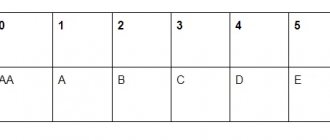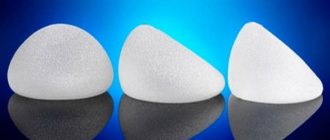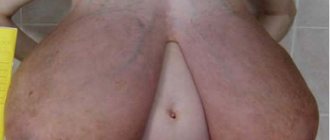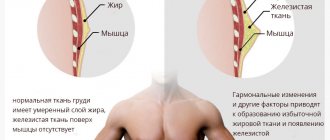Almost every woman dreams of large and beautiful breasts. And to help make this dream come true, breast mammoplasty is designed to increase breast size. Such popularity and prevalence of plastic surgery for breast augmentation is due to significant visual results. Breast augmentation surgery makes it possible to acquire a more expressive shape and size of your breasts. After surgical plastic surgery, a woman becomes more self-confident, she no longer feels awkward in front of the opposite sex and feels constrained in communication.
A plastic surgeon performs breast augmentation using silicone implants in most cases. There is also such a technique as breast augmentation without implants. Breast implants are now made from a safe and inert material - highly purified medical silicone.
Mammoplasty
INDICATIONS FOR MAMMOPlasty:
- macrosopathy, when the size of the breast increases sharply, but the location and elasticity are preserved;
- micromastia, or small breast size, which is a congenital pathology;
- ptosis of the mammary glands, when breast sagging occurs, but the size remains the same;
- post-lactation involution of the mammary glands, when after the end of breastfeeding the mammary glands decrease in size.
Mammoplasty in most cases involves inserting an implant into a woman’s body.
Thanks to implants, the breasts rise, become larger, and their elasticity returns. It’s not enough to decide on mammoplasty; you need to choose a suitable clinic, and most importantly, a professional surgeon with considerable experience in this field. During the consultation, the surgeon selects the most suitable mammoplasty option for the patient in her case, informs her about possible complications, as well as methods for eliminating them.
The success of mammoplasty depends on the quality of the implants installed in the patient, so price should not be a determining factor in its choice. A high-quality implant is quite reliable, so after installation it does not require replacement in the future, with the exception of the development of capsular contracture in the patient. In this case, the implant is replaced with simultaneous reconstructive surgery of the mammary glands.
Today, a new generation of implants is being used, the shape of which is as close as possible to the natural one, and has the appearance of a “frozen drop that rolls along the wall.” This form is called anatomical. When installing an anatomically shaped implant, its contours are not visible at all. The filler of such implants is a gel that imitates natural breast tissue, making the female breast “natural” to the touch. Thanks to modern installation methods, the implant cannot be palpated. Therefore, after this operation, the patient receives beautiful and naturally soft breasts.
INCREASE IN BREAST SIZE.
Perhaps the most common and least traumatic type of mammoplasty is augmentation mammoplasty or breast replacement, during which the breasts are given the volume desired by the patient while maintaining the shape or bringing it as close as possible to the classic one.
CHANGES IN THE CONTOURS AND SHAPE OF THE BREAST.
This type of mammoplasty is also quite common and is used when breasts sag and their shape changes. Today, such mammoplasty poses virtually no danger and leaves no marks on the skin. This is explained by the variety of modern implants (in shape, volume). The essence of this operation is to change the contours of the breast by “rebuilding” the skin frame, followed by removing excess and/or “stretching” of the skin using a specially selected implant. The simplest way to remove excess skin is a “circular lift”, during which the skin is removed around the areola, the seam is practically invisible after the operation. These two types of mammoplasty do not in any way affect a woman's future breastfeeding, since the breast tissue is not affected and the blood supply remains normal.
BREAST LIFTING AND REDUCTION.
A breast lift and simultaneous breast reduction is the most traumatic type of mammoplasty, which can lead to complications. This type of operation is performed using a large number of incisions, so there will be many more stitches after the operation. This operation strictly prohibits breastfeeding, that is, the child should be fed artificially, and the patient should take medications during this period that prevent lactation.
Correction of nipples and areolas belongs to a special group of operations, since when the nipple-areola complex is transplanted, breastfeeding becomes impossible.
PREPARATION FOR MAMMOPlasty.
When preparing a patient for surgery, it is necessary to conduct a basic or screening examination necessary to identify hidden pathologies and abnormalities that can affect the result of mammoplasty. Preparing the patient for surgery also includes consultation with an anesthesiologist on the type of anesthesia that is most suitable for her, taking into account her constitutional characteristics and health problems. In addition, when preparing for surgery, the patient should change her diet and eat only protein and carbohydrate foods. On the eve of the operation, you should skip dinner altogether. Two weeks before the day of surgery, a healthy patient should not use products that contain salicylates, and the use of hormonal contraceptives is also prohibited. A week before mammoplasty, it is necessary to stop drinking alcohol and smoking cigarettes, since these factors seriously affect blood flow, which means long-term healing of the sutures.
PAIN RELIEF DURING MAMMOPlasty.
As a rule, mammoplasty is performed using general anesthesia.
MAMMOPlasty.
The plastic surgery of mammoplasty lasts 1.2-4 hours, it all depends on the type of operation. The type of access and location of the incision depend on the characteristics of the constitution and the recommendations of the plastic surgeon.
LOCATION OF IMPLANTS UNDER THE BREAST GLAND.
This method is used for women with developed breast tissue; otherwise, the implant can be felt through the skin. This option for placing implants reduces not only the duration of the mammoplasty operation, but also the postoperative period. But in this case, the risk of capsular contractures increases.
ARMILLARY (UNDER THE PRIMARY MUSCLES) LOCATION OF IMPLANTS.
This option for placing implants significantly increases the duration of the operation and the healing period, in addition, the woman experiences much more pain. However, there are also significant advantages: the implant is practically invisible to the touch, the risk of capsular contractures is reduced, and does not in any way affect the mammographic examination.
ALSO WHEN IMPLANTING IMPLANTS, SEVERAL TYPES OF INCISIONS ARE USED:
- periareolar incision – around the areola, in the peripapillary region;
- inframammary - in the inframammary fold, under the mammary gland;
- axillary incision - in the axillary region;
- transumbilical (TUBA) incision is an incision in the navel area.
CONTRAINDICATIONS TO MAMMOPlasty.
There are not many contraindications to mammoplasty. The main thing during a consultation with a surgeon is not to hide anything important related to your health. The main contraindications are:
- patients under eighteen years of age;
- cancer;
- blood clotting disorder;
- infectious diseases;
- diseases of internal organs;
- incomplete lactation (natural feeding of a child is carried out on average for about a year).
REHABILITATION AFTER MAMMOPlasty.
The duration of the rehabilitation period depends on the type and modification of mammoplasty. Most often, complete recovery after mammoplasty surgery takes from several days to 2-4 weeks. As a rule, the patient can go home the very next day after the operation, but this is if the operation went without complications. It is not uncommon for a patient to leave the hospital on the day of surgery, since there is no need to be there. But still, periodic monitoring by a specialist should be carried out, as well as the patient’s compliance with certain restrictions recommended by the doctor.
During the first postoperative days, the patient feels some discomfort; there may be a feeling of skin tension in the area affected during the operation. This sensation is caused by post-operative swelling. It is normal to experience slight pain in the surgical area during the first few days. As a rule, swelling completely subsides 5-7 days after surgery. Hematomas in the area of the operation in the form of bruises and bruises may also be observed. But all unpleasant sensations and phenomena disappear completely after six months; after this period of time, the real result of mammoplasty is assessed.
The risk of complications if all recommendations are strictly followed is minimized. The most common complications are hypertrophied scars, contracture of prostheses, inflammatory changes in soft tissues, and hematomas. After mammoplasty, you should wear special compression garments for a month, which are individually selected by the doctor for each patient, taking into account the shape and size of the breast.
RISKS DURING AND AFTER MAMMOPlasty.
- pain in the breast area;
- feeling of numbness at the site of intervention;
- implant shift;
- asymmetry of the mammary glands;
- thrombosis of blood vessels;
- quite long healing of sutures;
- infection of this area;
- complications from the use of general anesthesia.
Mammoplasty helps make the dream of large, firm, beautifully shaped breasts a reality. And yet, before deciding on this operation, you should think carefully and evaluate all the pros and cons.
Bust size increase price
The cost of the operation is indicated in full (including local anesthesia).
| Medical service | Price |
| Consultation with a plastic surgeon | 2 000 |
| Breast augmentation with implants | 260 000 |
| Enlarged mammary glands with tubularity | 280 000 |
| Breast augmentation with periareolar lift | 280 000-320 000 |
| Breast augmentation with vertical/horizontal lift | 300 000-340 000 |
| Breast augmentation with your own fat | 180 000-250 000 |
Information for patients from other cities:
Write to the doctor on your personal What'sApp for an online consultation if you are not able to come several times. Phone numbers can be found here. If the doctor does not answer immediately, then most likely he is in the operating room and will answer you as soon as possible.
Seamless breast augmentation
Very often, women who are interested in breast augmentation surgery find articles about seamless and bloodless techniques. Titles like “Breast enlargement without stitches”, “Breast enlargement without scars”, “Breast enlargement without blood”, etc. are a marketing ploy and have nothing to do with reality.
The structure of the skin is divided into three layers - epidermis, dermis and subcutaneous fat.
In addition, the skin has additional elements. In particular, between the dermis and epidermis there is a basement membrane, when damaged, a scar always forms. This rule is dictated by anatomical and physiological characteristics and has not yet been broken. Using various methods, the severity of the scar can be significantly reduced. However, during breast augmentation operations it will always form. Thus, the myth about breast augmentation without a seam can be considered dispelled. Among other “tricks” and promises of marketers are:
Myth No. 1. When forming a pocket for the implant, the surgeon uses “blunt” tissue separation rather than a scalpel, so the blood vessels and milk ducts are not injured, therefore, swelling and pain do not develop after the operation.
This statement can be partly considered true. The surgeon actually forms the pocket using a “blunt” method, but the skin and subcutaneous tissue are cut with a scalpel. In addition, even with the blunt method, vessels and tissues are damaged, but the milk ducts always remain intact, except in cases where access is formed through breast tissue.
Myth No. 2. Most surgeons close the wound with conventional suture material (Vicryl, PDS, etc.), which leads to scar formation. The use of special glue during seamless operations avoids the formation of scars. Only a scratch remains on the skin.
For an ordinary person, this myth sounds very convincing, but the surgeon will immediately notice the “catch.” Such seamless techniques also involve the use of classic suture material in conjunction with special glue. Actually, if you look at the instructions for such glue, you will notice that manufacturers recommend using it only in conjunction with an intradermal suture. So we can say with confidence that the authors of “seamless” methods comply with this recommendation.
Myth No. 3. Seamless breast augmentation is low-traumatic and does not lead to the development of significant swelling and bleeding, which makes it possible to avoid the use of drainages, which leave marks on the skin, albeit small ones.
This myth, like the previous one, can be easily dispelled by any surgeon. The most important stage of any operation is drainage of the cavity. If you do not create a path for the evacuation of wound fluid, you can develop a serious complication in the form of a seroma, which will require additional treatment. Therefore, drainages are always installed after augmentation.
In most cases, seamless techniques are just advertising and serve only to attract gullible women. There are no miracles in surgery. The success of the operation largely depends on the experience of the surgeon and the responsible behavior of the patient.
Breast surgery in Khabarovsk
INDICATIONS FOR MAMMOPlasty:
- macrosopathy, when the size of the breast increases sharply, but the location and elasticity are preserved;
- micromastia, or small breast size, which is a congenital pathology;
- ptosis of the mammary glands, when breast sagging occurs, but the size remains the same;
- post-lactation involution of the mammary glands, when after the end of breastfeeding the mammary glands decrease in size.
Mammoplasty in most cases involves inserting an implant into a woman’s body.
Thanks to implants, the breasts rise, become larger, and their elasticity returns. It’s not enough to decide on mammoplasty; you need to choose a suitable clinic, and most importantly, a professional surgeon with considerable experience in this field. During the consultation, the surgeon selects the most suitable mammoplasty option for the patient in her case, informs her about possible complications, as well as methods for eliminating them.
The success of mammoplasty depends on the quality of the implants installed in the patient, so price should not be a determining factor in its choice. A high-quality implant is quite reliable, so after installation it does not require replacement in the future, with the exception of the development of capsular contracture in the patient. In this case, the implant is replaced with simultaneous reconstructive surgery of the mammary glands.
Today, a new generation of implants is being used, the shape of which is as close as possible to the natural one, and has the appearance of a “frozen drop that rolls along the wall.” This form is called anatomical. When installing an anatomically shaped implant, its contours are not visible at all. The filler of such implants is a gel that imitates natural breast tissue, making the female breast “natural” to the touch. Thanks to modern installation methods, the implant cannot be palpated. Therefore, after this operation, the patient receives beautiful and naturally soft breasts.
INCREASE IN BREAST SIZE.
Perhaps the most common and least traumatic type of mammoplasty is augmentation mammoplasty or breast replacement, during which the breasts are given the volume desired by the patient while maintaining the shape or bringing it as close as possible to the classic one.
CHANGES IN THE CONTOURS AND SHAPE OF THE BREAST.
This type of mammoplasty is also quite common and is used when breasts sag and their shape changes. Today, such mammoplasty poses virtually no danger and leaves no marks on the skin. This is explained by the variety of modern implants (in shape, volume). The essence of this operation is to change the contours of the breast by “rebuilding” the skin frame, followed by removing excess and/or “stretching” of the skin using a specially selected implant. The simplest way to remove excess skin is a “circular lift”, during which the skin is removed around the areola, the seam is practically invisible after the operation. These two types of mammoplasty do not in any way affect a woman's future breastfeeding, since the breast tissue is not affected and the blood supply remains normal.
BREAST LIFTING AND REDUCTION.
A breast lift and simultaneous breast reduction is the most traumatic type of mammoplasty, which can lead to complications. This type of operation is performed using a large number of incisions, so there will be many more stitches after the operation. This operation strictly prohibits breastfeeding, that is, the child should be fed artificially, and the patient should take medications during this period that prevent lactation.
Correction of nipples and areolas belongs to a special group of operations, since when the nipple-areola complex is transplanted, breastfeeding becomes impossible.
PREPARATION FOR MAMMOPlasty.
When preparing a patient for surgery, it is necessary to conduct a basic or screening examination necessary to identify hidden pathologies and abnormalities that can affect the result of mammoplasty. Preparing the patient for surgery also includes consultation with an anesthesiologist on the type of anesthesia that is most suitable for her, taking into account her constitutional characteristics and health problems. In addition, when preparing for surgery, the patient should change her diet and eat only protein and carbohydrate foods. On the eve of the operation, you should skip dinner altogether. Two weeks before the day of surgery, a healthy patient should not use products that contain salicylates, and the use of hormonal contraceptives is also prohibited. A week before mammoplasty, it is necessary to stop drinking alcohol and smoking cigarettes, since these factors seriously affect blood flow, which means long-term healing of the sutures.









